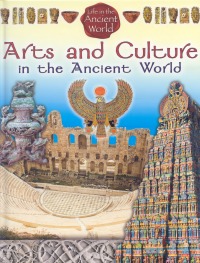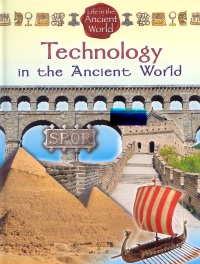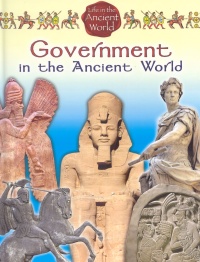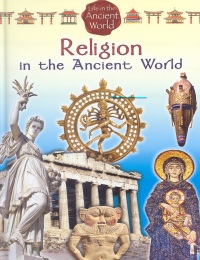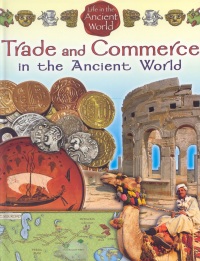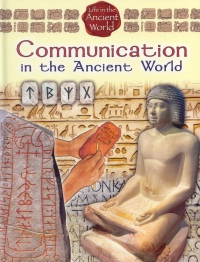| ________________
CM . . . . Volume XVIII Number 34 . . . . May 4, 2012
excerpts:
Crabtree has developed the information-book series to a point where the format could hardly be improved. All books have short blocks of text with some bold-lettered words indicating that a definition may be found in the glossary. The text is set out by colourful and varied pictures with captions that explain the relevance to the surrounding words. The pictures are sometimes reproductions of contemporary works, or they are modern photographs. There are maps, an index, and the aforementioned glossary. All these characteristics are present in this series, "Life in the Ancient World." Each volume begins with the introductory sentence: "Most historians agree that a civilization is a group of people that shares common languages, some form of writing, advanced technology and science, and systems of government and religion." Each book then goes on to deal with one of those topics. However, given that each book covers each topic in each of ancient: Japan, China, Mesopotamia, the Indus river valley, Greece, Rome, Egypt, Africa, Mesoamerica, South America, and Celtic and Viking societies, and that each book is only 32 pages in length, the information included is so sketchy as to be of practically no use, or, unfortunately, interest. There are, of course, interesting snippets here and there. The Eqyptians were not the only peoples to mummify the bodies of their important dead -- the South Americans did also. We are paid 'salaries' today because the soldiers of the Roman legions were paid in 'saltaris', or salt. In the third century, Rome had 23 emperors, of which only one died a natural death. And so forth. With the exception of the volume on government, the information in mostly conveyed in the form of lists. "Mines near Athens were rich in silver, marble, iron, and lead." "Most Chinese were peasant farmers who grew crops on small plots of land. All family members were expected to work on these farms, which grew crops such as millet, rice, and wheat for people in the army and in the cities." This is information, but it is not particularly gripping. I am not saying how this particular series could have been done better. It is attempting to cover an enormous span of both time and space, and the task, given the restrictions of the format, is impossible. That being said, students looking for small bits of information may find what they want in one of these books. And the pictures, as always, are excellent. Given the state of library budgets, however, I would say that the money could be better spent elsewhere. Recommended with reservations. Mary Thomas lives in Winnipeg, MB, and is retired, but she still works occasionally in school libraries.
To comment
on this title or this review, send mail to cm@umanitoba.ca.
Copyright © the Manitoba Library Association. Reproduction for personal
use is permitted only if this copyright notice is maintained. Any
other reproduction is prohibited without permission.
NEXT REVIEW |
TABLE OF CONTENTS FOR THIS ISSUE
- May 4, 2012.
AUTHORS |
TITLES |
MEDIA REVIEWS |
PROFILES |
BACK ISSUES |
SEARCH |
CMARCHIVE |
HOME |
